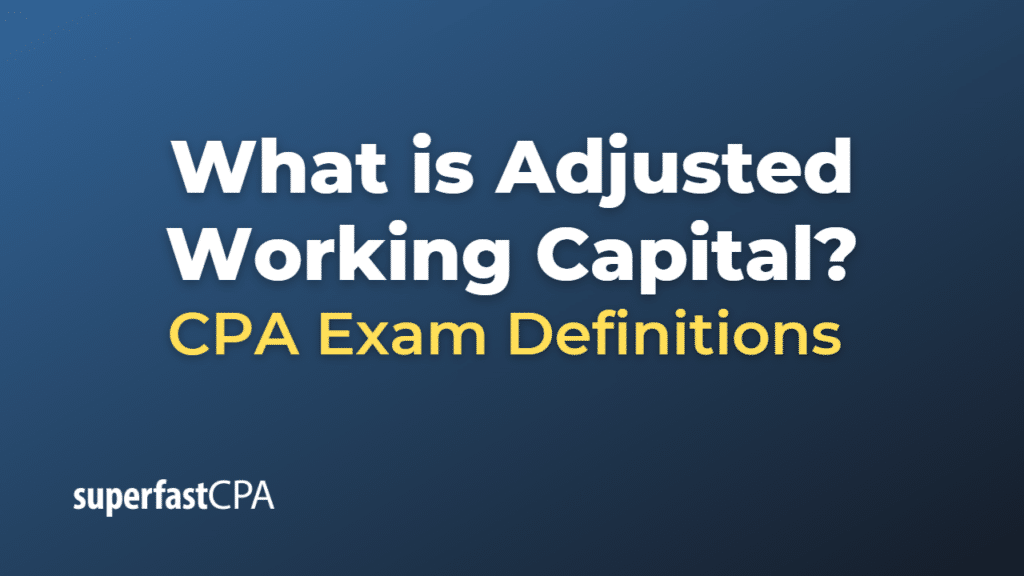Adjusted Working Capital
Adjusted working capital is a measure of a company’s short-term liquidity, reflecting the net difference between current assets and current liabilities after adjusting for certain non-operational items. This metric provides insight into a company’s ability to cover its short-term financial obligations and efficiently manage its working capital.
To calculate adjusted working capital, you start with the traditional working capital formula:
Working Capital = Current Assets – Current Liabilities
Then, you make adjustments to exclude non-operational items, which can include:
- Removing cash and cash equivalents from current assets, as they can be considered too liquid to be included in working capital analysis.
- Excluding short-term debt and any interest-bearing liabilities from current liabilities, as they are considered part of the company’s financing structure rather than operational liabilities.
- Removing any non-operational assets or liabilities that are not directly related to the company’s core business operations.
After making these adjustments, you’ll have the adjusted working capital value, which is a more accurate representation of the company’s operational liquidity and efficiency in managing its working capital.
Example of an Adjusted Working Capital
Let’s consider a hypothetical company, ABC Corp., and calculate its adjusted working capital using the given financial information:
Current Assets:
- Cash and cash equivalents: $50,000
- Accounts receivable: $80,000
- Inventory: $120,000
- Prepaid expenses: $20,000
Current Liabilities:
- Accounts payable: $60,000
- Short-term debt: $40,000
- Accrued expenses: $30,000
- Unearned revenue: $10,000
First, let’s calculate the traditional working capital: Working Capital = Current Assets – Current Liabilities Working Capital = ($50,000 + $80,000 + $120,000 + $20,000) – ($60,000 + $40,000 + $30,000 + $10,000) Working Capital = $270,000 – $140,000 Working Capital = $130,000
Now, let’s calculate the adjusted working capital by making the necessary adjustments:
- Remove cash and cash equivalents from current assets: Adjusted Current Assets = $270,000 – $50,000 = $220,000
- Exclude short-term debt from current liabilities: Adjusted Current Liabilities = $140,000 – $40,000 = $100,000
- In this example, there are no non-operational assets or liabilities to adjust.
Adjusted Working Capital = Adjusted Current Assets – Adjusted Current Liabilities Adjusted Working Capital = $220,000 – $100,000 Adjusted Working Capital = $120,000
So, the adjusted working capital for ABC Corp. is $120,000, which represents its operational liquidity and efficiency in managing its working capital.













